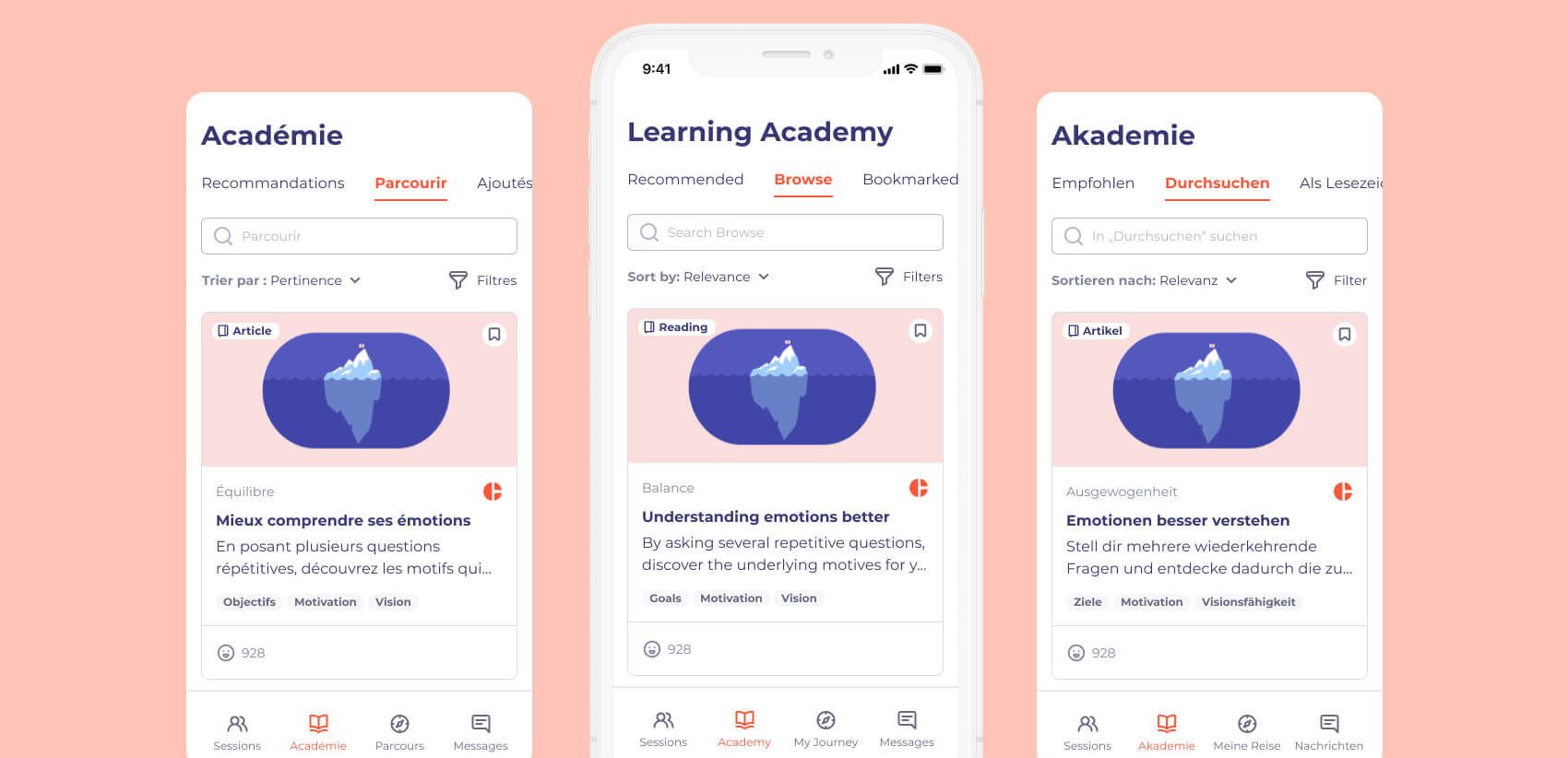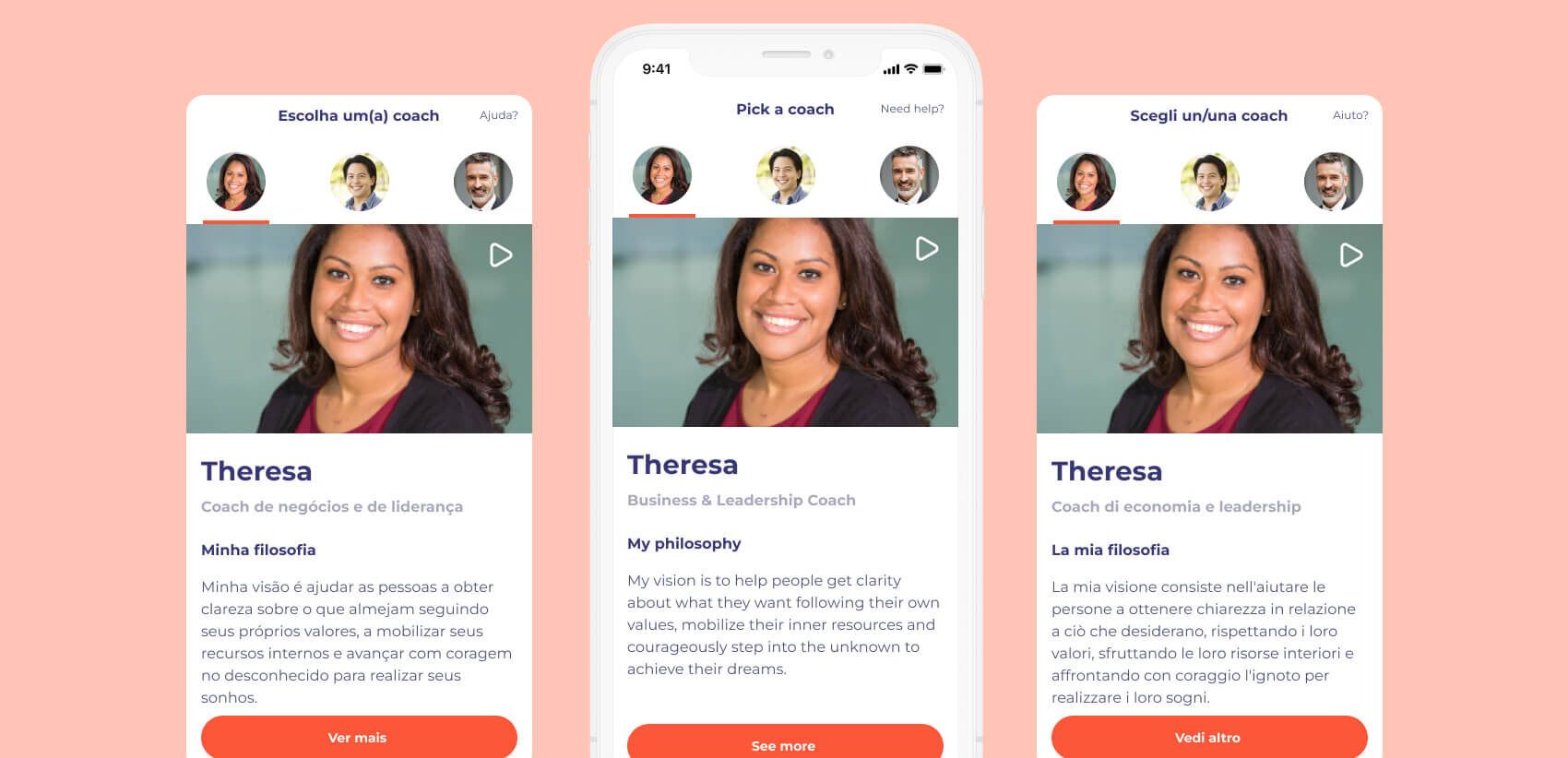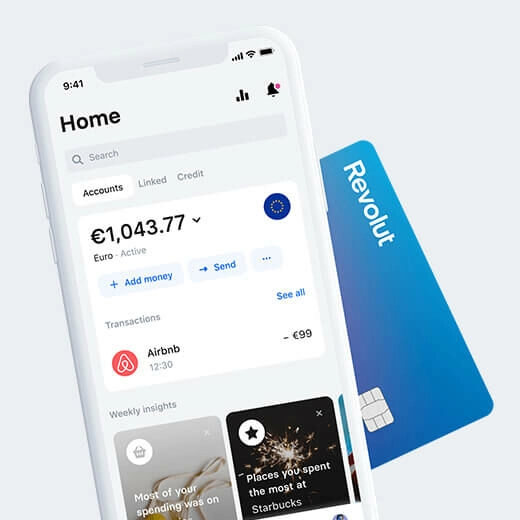How CoachHub doubled its supported languages while improving NPS with Lokalise & Storyblok
"What matters to us are efficiency and the quality of our localized content. We’ve doubled the number of languages we support to almost 20 in less than a year, and have plans to roll out more in 2023. This would be difficult to achieve using spreadsheets and copy-pasting from Word documents."
Isabelle C.V. Bayer and Kris Naydenov
Senior Content Manager and Localization Program Manager at CoachHub
Founded in 2018, CoachHub is the leading people development solution that allows companies to create personalized, measurable, and scalable coaching programs. Today, they have thousands of business coaches in 90 countries across six continents.
We sat down with CoachHub’s Localization Program Manager, Kris Naydenov, and Isabelle C.V. Bayer, Senior Content Manager, to learn how they’ve scaled their multilingual content with Lokalise and Storyblok.

The Challenge
Low visibility of processes and difficulties in maintaining quality while scaling
CoachHub has a multitude of multimedia content pieces, including lengthy articles, course material, and visuals. Before Lokalise, they used to send out all their content to a translation agency or let translators work within Storyblok.
This setup wasn’t scalable or traceable. “In a nutshell, we were dealing with a large amount of hardly visible operational and communicational work. Plus, it didn't allow us to build enough translation memory to maintain our high quality standards in the long run,” says Isabelle.
“This led us to the conclusion that we have to come up with an optimized way of working and bringing all our stakeholders together.”
A manual, error-prone approach
Localization can be complex, especially if you aren't working with the right tools.
Prior to the integration between Storyblok and Lokalise, project managers at CoachHub were dealing with an increasing volume of content being translated into Word documents. “I knew that the process of using Word docs for translating content could be quite manual and problematic in terms of version control and consistency,” says Kris.
“Dealing with a large number of files makes the process manual, difficult to track, and more error prone." He adds:
“Let’s imagine that as a localization manager I’m not using Lokalise but trusting the translation agency using their TMS. When I receive the final files, I have no idea if they followed the glossary terms, especially in the case of localization files that contain a lot of code. Now imagine they deliver a JSON file… it’s difficult to open a JSON and compare it to the English source JSON.”
“The absence of a TMS made our jobs difficult, so when I found out that our colleagues were using Storyblok as a CMS, I suggested we set up the Lokalise-Storyblok integration to streamline the process. Thanks to the integration, with a few steps, we would be able to import any new articles from Storyblok to be translated in Lokalise, and then export back the translated articles to be published directly in Storyblok”, he continues.
“Dealing with a large number of files makes the process manual, difficult to track, and more error prone.”
The Solution
Fully integrated, scalable, custom workflows
In an ideal world, content lives in a content management system (CMS) with existing APIs or connectors to a company’s TMS.
It’s fairly common for companies to have many systems for managing content. Often, the TMS is one of the only places that is truly “central” companywide, where all of this content gets stored, in multiple languages, along with the English or other source language equivalent. This is true for CoachHub.
CoachHub works with various language partners (agencies and freelancers) and a rich tech stack.
“One of the strong points for me was that Lokalise provides 50+ integrations with third-party applications. I liked the flexibility and ease of onboarding language service providers (LSPs).” explains Kris.
He adds: “With a few clicks, I can invite a project manager from a partner LSP or a freelance translator. The feedback we’ve received about Lokalise from freelance translators has also been positive.”
From a content perspective, having the Lokalise and Storyblok integration brings all the stakeholders together while translating. “The direct integration gives us the opportunity to figure out the status of content when it comes to Storyblok and track progress when it comes to translations.” Isabelle points out.
“This is a huge benefit because localization is especially challenging when content is spread out across emails, files, cloud services, task managers, spreadsheets, chats, meetings, and so on. Critical information can get misplaced or even lost.
Having integrated platforms that allow our localization teams to see where everything is, understand what everyone is working on, and know exactly how to measure success is crucial. Plus, both Lokalise and Storyblok share common traits in terms of how intuitive they are – the onboarding process is easy and fast.”
“By using the Lokalise-Storyblok integration we are now able to keep track of the progress of work and communicate with our stakeholders in one place. They can easily point out questions related to specific parts of the texts so we can support them along with having a record.” says Isabelle.
One of the strong points for me was that Lokalise provides 50+ integrations with third-party applications. I liked the flexibility and ease of onboarding language service providers (LSPs).
A centralized tool and single source of truth for multilingual content
Isabelle and her team are focused on getting new content into their Academy CMS in 8 different languages.
The teams involved in the localization process are localization managers (leading the process), the content team, product managers, developers (who upload new keys), and designers who add visual context (screenshots and descriptions) using the Figma plugin.
With all the contributors CoachHub has in their localization team; it’s crucial they can track progress, structure communication, and manage the entire localization program from a single dashboard to:
- Easily centralize all multilingual content management
- Conveniently manage projects with full visibility of the team's workloads
- Optimize workflows and automate processes
- End back-and-forth communications
“Lokalise is where all the localization magic happens,” says Isabelle.
“For all written content we use Lokalise; whenever a new learning activity is implemented into our CMS Storyblok, Lokalise is used for the process of translation and review. Then we export back into Storyblok for final adjustments before the content is pushed to production,” she explains.
Lokalise ensures that quality and task requirements are followed through.

The Results
- Number of languages doubled to 20 (UI coaching platform) in less than a year
- 25% more time to focus on things that matter
- Increasing NPS and customer satisfaction
Reducing costs through process automation
According to Isabelle, the integration with Storyblok has increased the time she and her team have for other tasks:
“On average, we have 25% more time,” says Isabelle. “We can track the progress of projects and life is much easier when it comes to managing an increasing volume of content.”
Accelerating growth and scale through localization
The key to building a unified, global localization workflow that enables teams to scale and get to market faster is a collaborative platform that brings everyone under one roof.
“What matters for us is efficiency and the quality level of our localized content. We have doubled the number of languages we offer within our coaching platform to almost 20 in less than a year, and there are plans to roll out more languages next year. This would be difficult to achieve doing it the old-fashioned way, using spreadsheets and copy-pasting from Word documents.” says Kris.
Improving NPS and providing exceptional customer experience
“By offering such a large number of languages, our platform is more appealing and easier to use. It also sends a message to our clients and our coaches that we care about their backgrounds and we want to accommodate them.” Kris explains.
“We have different ways of measuring our customer satisfaction (e.g., NPS); our scores so far show us that we’re doing really well in that respect, and we will therefore continue putting our clients at the center of what we do.” he continues.
Key Lokalise features used
- Branches
- Tasks (for translation and review)
- Tags
- Screenshots
- Key description
- Glossary with translation by country
- Translation memory
- Translation memory management
- QA
- Spelling expectations
- Snapshots
- In addition, their projects are connected to Amazon S3 for storage + Slack and E-mail for notifications.
Delivering scalable, native-level localization isn’t easy, but working with Lokalise is. Just ask our partners from Storyblok. So, let us help you elevate your localization expertise, serve your customers in the best way possible, and uncover new opportunities together by joining our tech partnership program. For a no-strings conversation, contact us today.
Localization made easy.
Try it free or let us show you how it works
Read more case studies

How Lokalise contributed to Revolut's massive growth

ESL Gaming shortens time to market with a centralized approach to translation
Case studies

Behind the scenes of localization with one of Europe’s leading digital health providers
Read more Case studies
Support
Company
Localization workflow for your web and mobile apps, games and digital content.
©2017-2026
All Rights Reserved.

